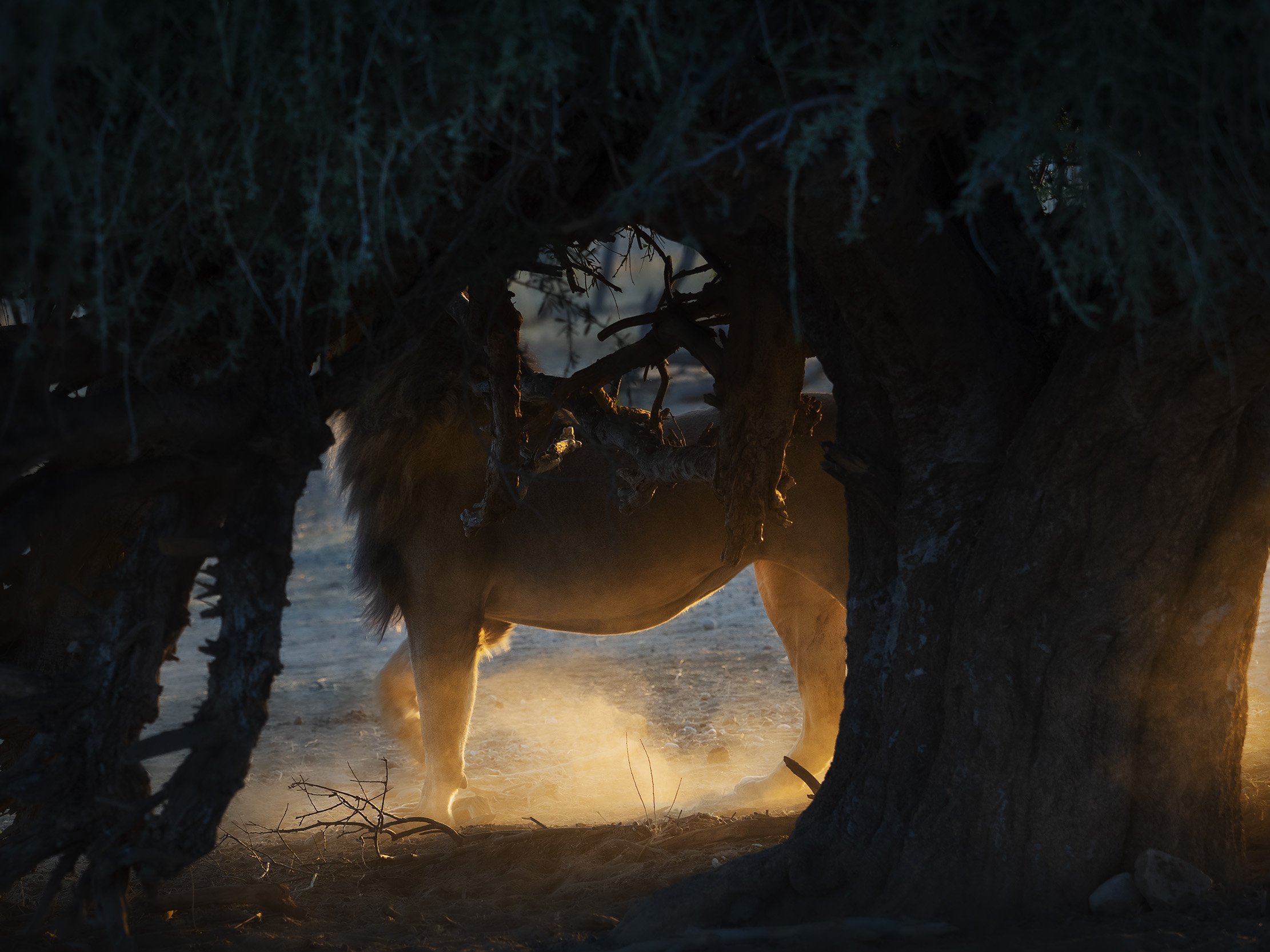The living desert
One of my favorite ecosystems is the Kalahari Desert. It’s still wild, untamed, mainly unexploited and the biodiversity is astonishing. Thus it is the light - it is some of the most magical light in the world of nature photography. As dawn breaks, the golden hues of the rising sun bathe the landscape in soft, warm tones, casting long, dramatic shadows over the rippled sand. In the evenings, the light transforms into a fiery palette of amber, crimson, and lavender, creating a painterly sky that contrasts against the arid earth. This fleeting magic hour highlights the intricate details of dry grasses, weathered trees, and the occasional wildlife silhouette. The Kalahari, light doesn’t just illuminate - it tells stories.
This desert, spanning parts of Botswana, Namibia, and South Africa, is a vast semi-arid wilderness characterized by its red sands and unique ecosystem. While technically a desert, it receives more rainfall than most deserts - albeit sporadically, with long seasons of no rain punctuated by brief, sparse downpours that bring life to the land. Despite the harsh conditions, the Kalahari is teeming with diverse wildlife.
Among its most striking inhabitants are the black-maned lions, which are renowned for their size and appearance and their adaptability to the Kalahari’s demanding environment. These apex predators share the landscape with an array of other carnivores, including cheetahs, leopards, hyenas of two species, and African wild dogs. Smaller predators like wild cats, caracals, jackals, and foxes also thrive here, as well as the much-beloved suricats.
The birdlife in the Kalahari is equally remarkable. From the stately secretary bird to colorful bee-eaters, as well as kestrels and the sociable weavers that build enormous communal nests, the skies and acacia trees are alive with avian activity.
This Kalahari is also home to the San people, one of the oldest indigenous cultures in the world. For thousands of years, the San have adapted to the Kalahari’s challenging environment, using their profound knowledge of the land, its animals, and its sparse water sources to survive. Their traditional way of life is deeply intertwined with nature, characterized by remarkable tracking skills and the use of natural resources for food, tools, and shelter. But now they are forced out of their homelands by the new bureaucratic states.
The Kalahari’s rich biodiversity is protected within the Kgalagadi Transfrontier National Park, a massive conservation area straddling the borders of South Africa and Botswana. The park offers a sanctuary for its wildlife, ensuring that the delicate balance of this ecosystem is maintained. Its open landscapes and dry riverbeds provide breathtaking opportunities for observing the dynamic interactions between predators and prey, especially during the cooler months when wildlife gathers around the limited water sources.
Despite its arid reputation, the Kalahari is a land of resilience and contrasts—its sparse rains transform the landscape into a temporary oasis before the dry, unyielding conditions return. This unique rhythm of life is what makes the Kalahari Desert one of the most fascinating and awe-inspiring places on Earth and a heaven for me as a photographer
Wildebeests at the waterhole
Brothers in arms. The lion behind is severely injured by porcupine spikes
Flying hair from the mane
Mating
Scent-marking territory
Sundown
Successfully hunt of an oryx
Resting under a camel thorn acacia in the heat of midday
Disappearing
Steenbok
Springbok in high-key
Patiently waiting for access to the water in 44 degrees celsius temperature
Often seen together: Pale Chanting Goshawk and Black-backed Jackal
Brown hyena: ghost of the desert
Young Pale Chanting Goshawk
The ever so shy Bat-eared fox
Cape Eagle-owl
Tawny eagle on the lookout
San hunter
San woman and "Ghost-acacia". Their spirits are in the land
Tawny eagle
Cape Crow
Sunset and Oryx
Bat-eared fox
Black-backed jackal
Wildebeest in high key
Red Hartebeest
Alarmed Springboks at the waterhole
Female Cheetahs with two nearly grown-up cubs are making their way to the waterhole and passing aggressive Oryx
Resting Caracal
African Hoopoe
Caracal hiding
Hunting Cheetah in full speed
Springbok early morning
Young Martial Eagle
Swallow-tailed Beeater




































